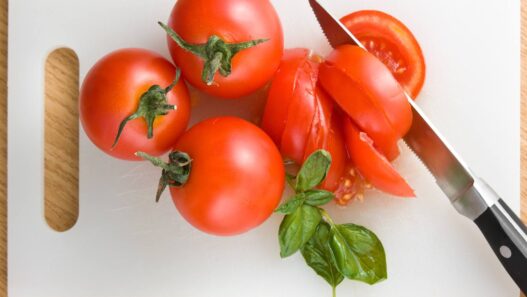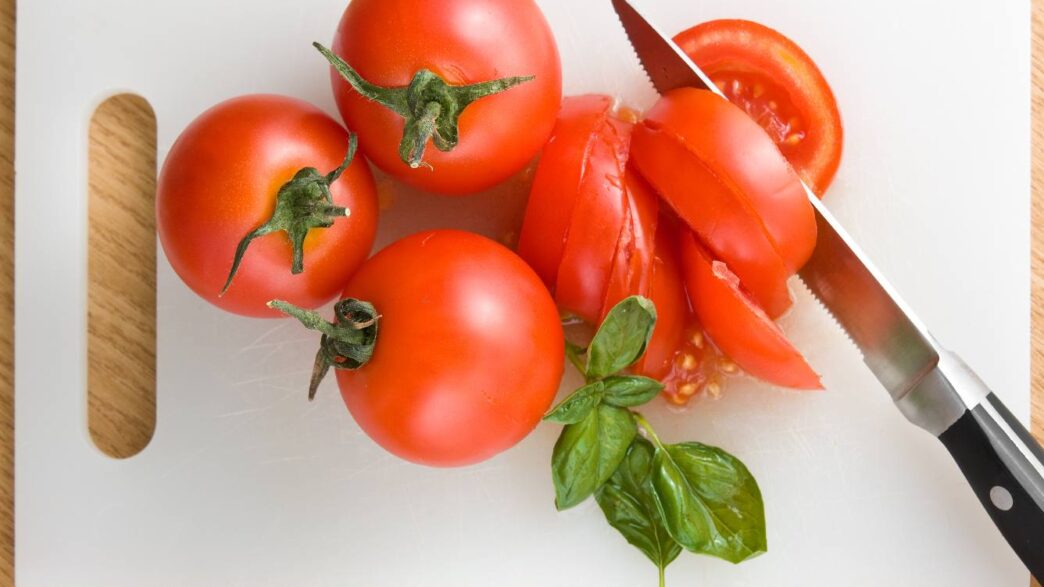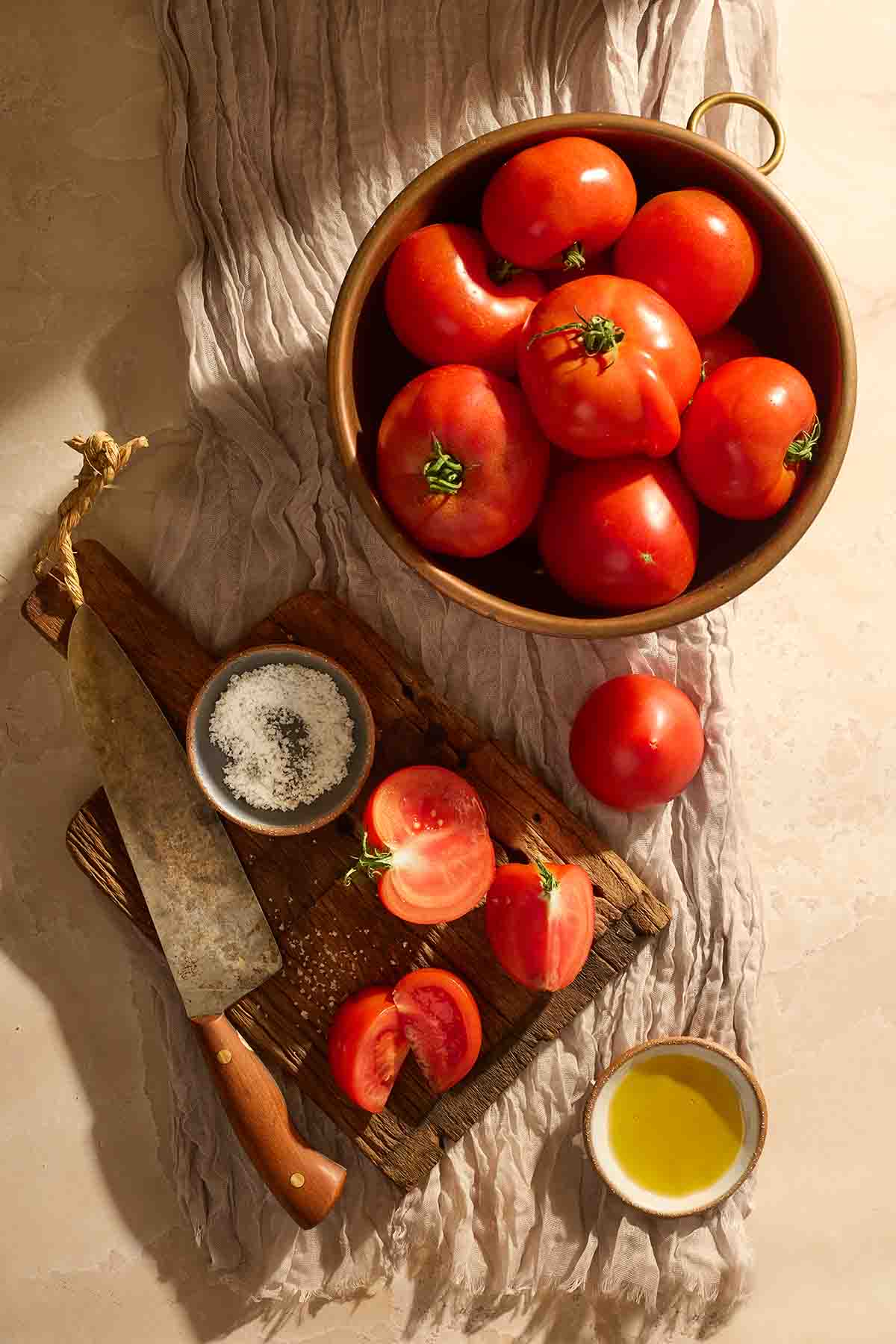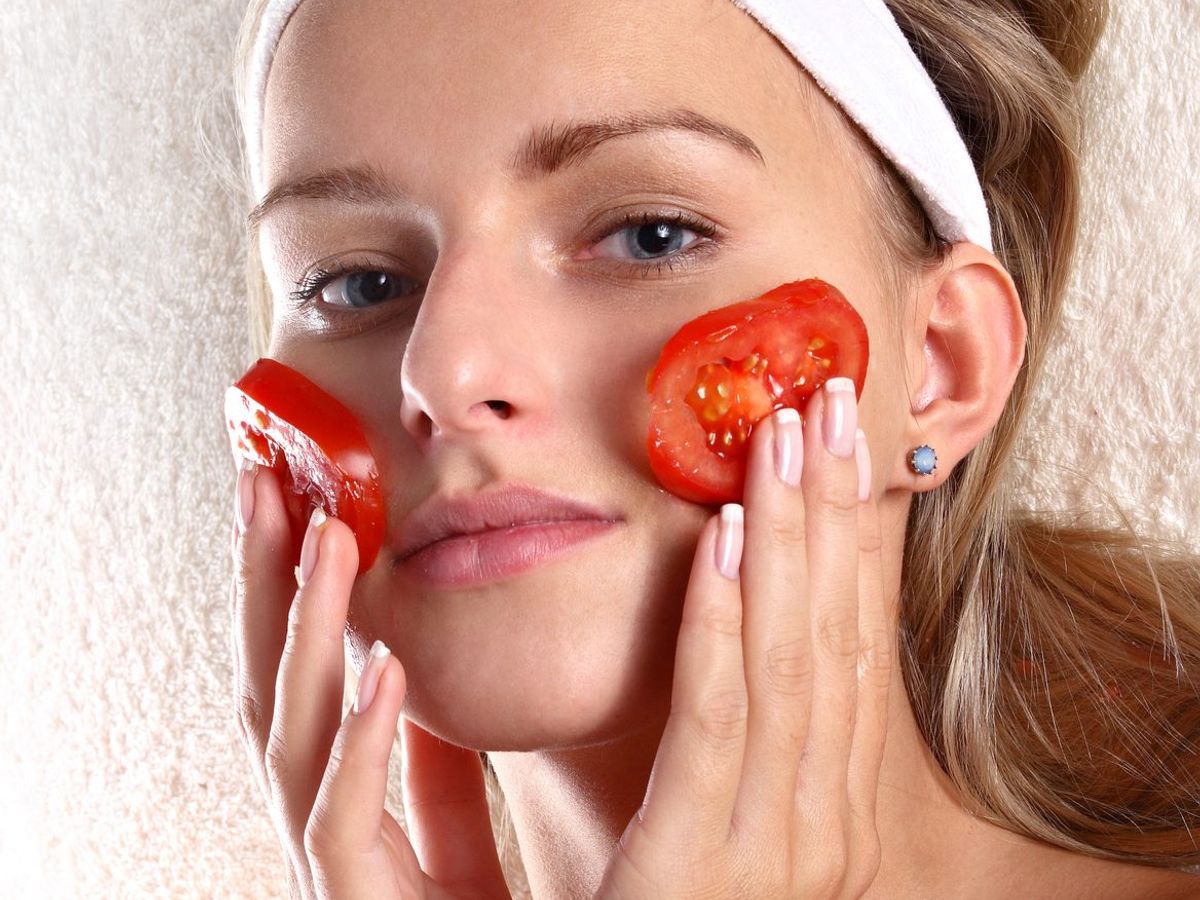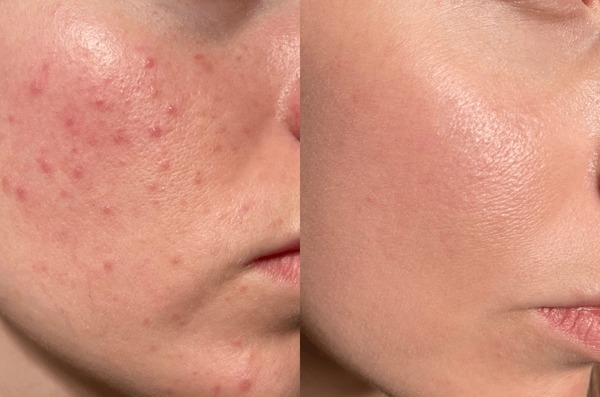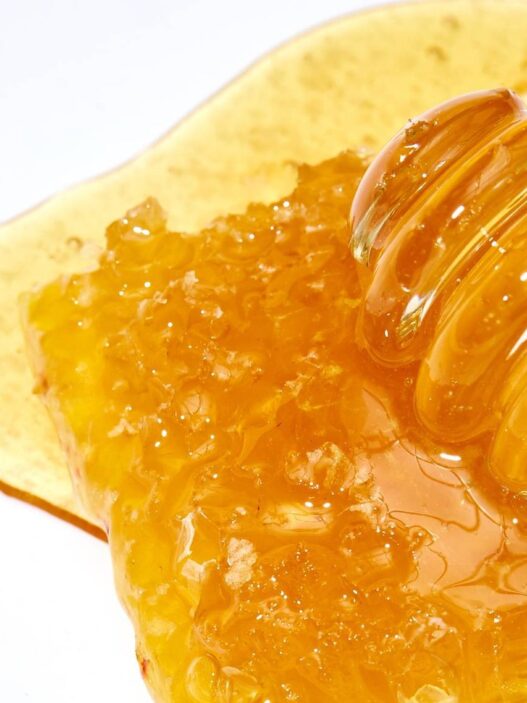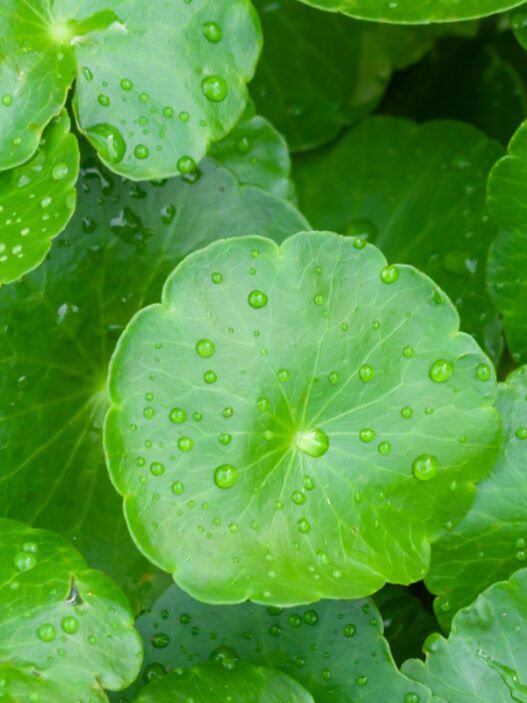Tomatoes aren’t just a kitchen staple, they’re a skincare powerhouse. From acne to sun damage, tomato-based remedies offer gentle, affordable care.
You’ve probably tossed tomatoes into a salad or cooked them into a curry, but ever thought of rubbing one on your face? You might not think twice about tomatoes just another ingredient in your kitchen, right?
But this plump little fruit has quietly made waves in the world of natural skincare. Packed with nutrients your skin actually likes, plus mild acids and antioxidants, it’s been a go-to in homemade beauty hacks for years.
Got breakouts that won’t quit? Skin feeling blah or begging for a bit of life? Tomatoes could be the underrated sidekick your skincare routine’s been missing all along..
In this piece, we’re diving into the good stuff, how tomatoes help, how to use them, what to watch out for, and a few tips that go beyond the usual.
So, What’s Actually Inside a Tomato That Your Skin Loves
Okay, before we start slathering tomato pulp on our faces, let’s talk about what’s going on inside this little red fruit. It’s not just juicy, it’s kind of a skincare cocktail.
Vitamin C’s kinda like that friend who hypes you up, it helps your skin glow, fade the dull spots, and feel more alive. It helps fade those stubborn dark spots and gives your face that fresh, bouncy look.
Then there’s lycopene, a fancy word for the stuff that fights off sun damage and keeps your skin from aging too fast. Think of it as sunscreen’s quiet cousin.
Vitamin A? That’s your skin’s repair crew. It helps patch things up and softens the look of old acne drama.
Potassium is the hydration hero. If your skin’s feeling dry or cranky, this one steps in with a tall glass of water.
And those natural acids? They kinda nudge your skin to let go of the old, tired layers, nothing harsh, just a soft push toward feeling fresh.
Put it all together, and you’ve got a fruit that’s basically doing skincare without the price tag. Tomatoes aren’t trying to be fancy, they just work.
Tomatoes & Skin
The Quiet Little Glow-Up You Didn’t See Coming
They might seem like just another veggie chilling in your fridge, but tomatoes are quietly doing the most when it comes to skin care. No hype, just hidden magic. If your skin’s been acting up—dull, oily, sunburnt, or just tired—this fruit might be the quiet fix you didn’t know you needed.
They’ve got that glow-boosting magic, thanks to Vitamin C. It helps fade those stubborn dark spots and brings a little light back to your face.
Breakouts? Tomatoes have natural acids that help calm the chaos—balancing oil and quietly fighting off the stuff that causes pimples.
Been out in the sun a bit too long? Your skin might be feeling cranky, but tomatoes have this quiet little compound—lycopene—that steps in to calm things down. It’s not loud or dramatic, just gently helps with the redness and gives your skin a breather.
And those tiny lines that sneak in over time? Tomatoes carry antioxidants that don’t make big promises—they just quietly help your skin stay smooth and slow things down a little. Like a soft nudge, not a full-on makeover.
Oily skin throwing tantrums? Tomatoes help tone things down, shrink those pores, and keep the shine in check.
Even skin tone? Yep, they’ve got that covered too. Stick with tomatoes for a while, and you might notice those uneven patches slowly mellowing out—your skin starts looking a bit more even, a bit more calm.
Juice or Pulp? What Actually Works Better for Your Skin
So you’ve got a tomato in hand—now what? Should you go for the juice or mash it into pulp? Honestly, both have their perks.
The juice is light and quick—it sinks into your skin easily and works well if you’re dealing with tanning or uneven patches. It’s like a fast little fix when you’re short on time.
The pulp, though? That’s the good stuff for masks. It’s thicker, stays put, and gives your skin a deep drink of hydration while it works its magic.
Best move? Mix and match. If you’re in a hurry, the juice does the trick—quick and easy. But when you’ve got time to pamper yourself, that thick pulp is perfect for a slow, skin-loving mask.
What Science Has to Say About Tomatoes & Skin
Turns out, tomatoes aren’t just a DIY trend—they’ve got some solid science behind them. Studies show that foods rich in lycopene (yep, tomatoes are loaded with it) help protect your skin from sun damage and slow down early aging signs.
And that Vitamin C? It’s not just one of those trendy claims—there’s actual science behind it. Vitamin C, which tomatoes have plenty of, quietly helps your skin let go of uneven tones and brings back that natural bounce.
And sure, they might look basic sitting in your kitchen, but tomatoes carry more skin-friendly goodness than you’d expect. No fancy packaging, just quiet power packed into a juicy little fruit.
Tomatoes & Skin: Playing Matchmaker with Your Skin Type
You wouldn’t think much of them sitting in your kitchen, but tomatoes have this quiet little habit of showing up in DIY skincare tricks. Depending on what your skin’s dealing with, there’s a way to make them work for you.
– If your skin’s feeling extra oily, a splash of tomato juice with a few drops of lemon can help tone things down. It’s not fancy—just a simple mix that helps your face feel a little less shiny and a bit more balanced.
It helps tone down the shine and keeps things feeling fresh.
– Dry skin feeling tight? Mash up some tomato pulp and stir in a spoon of honey. It’s like a mini moisture mask—soft, soothing, and hydrating.
– Sensitive skin getting fussy? Don’t go full-strength. Dilute tomato juice with aloe vera gel—it’s gentler and way less likely to cause irritation.
– Combo skin being complicated? Treat each zone like its own mood. Dab tomato pulp on the oily spots (like your T-zone), and use honey where things feel dry.
Little Tomato Fixes for Everyday Skin Stuff
Tomatoes can be surprisingly helpful when your skin’s throwing tantrums. Here’s how people use them for common issues:
– Breakouts & pimples: Just dab a bit of raw tomato juice on the spots. Let it sit for a few minutes—10 is usually enough—then rinse off. It’s simple, but it helps calm things down.
– Pigmentation patches: Mix tomato juice with a few drops of lemon. Use it a couple of times a week, and over time, you might notice the uneven tones softening.
– Sunburn stress: Blend tomato pulp with plain yogurt and apply it to the red areas. It cools things off and helps your skin recover faster.
– Want that glow? A tomato-honey mask twice a week can give your skin a soft, natural radiance—like you’ve been sleeping well and drinking water (even if you haven’t).
– Dark circles dragging you down? Chill some tomato juice, soak a cotton pad, and gently press it under your eyes. It’s refreshing and helps with puffiness too.
Tomatoes in Traditional Skincare: A Quiet Classic
In Ayurvedic circles, tomatoes are seen as cooling—especially helpful when your skin’s feeling hot, flushed, or just out of balance. They’re said to calm that fiery “pitta” energy, which shows up as redness or irritation.
Old-school beauty routines often leaned on tomato pulp for simple fixes—like easing sunburn, softening tan lines, or just giving the skin a gentle glow. No fancy formulas, just a ripe tomato and a little trust in nature.
Tomato vs. Other Natural Remedies
Tomato vs. Cucumber – Tomato brightens, cucumber cools.
Tomato vs. Aloe Vera – Tomato reduces pigmentation, aloe hydrates deeply.
Tomato vs. Tomato’s got that gentle touch—it helps lift off the dull stuff without being harsh. Turmeric, on the other hand, brings its antibacterial power to the table, quietly fighting off breakouts and calming the skin.
Put them together, and you’ve got a pretty balanced duo. One smooths, the other protects. It’s a simple mix, but it works like a charm when your skin needs both care and calm.
Expert Tips for Safe Use of Tomatoes on Skin
- Always do a patch test to avoid irritation.
- Avoid using tomato daily on sensitive skin; 2–3 times a week is enough.
- Don’t keep tomato juice/masks for more than 15 minutes.
- Always moisturize afterward to prevent dryness.
Adding Tomatoes to Your Skincare Routine
Morning: Apply diluted tomato juice to freshen up.
Weekly Ritual
Twice a week, when the mood’s right and your skin feels a little dull, mix up some tomato pulp with honey. It’s simple, soothing, and leaves your face feeling fresh—like it just took a deep breath.
Post-Sun Chill
Been out in the sun too long? A quick blend of tomato and aloe vera can help calm things down. It’s cooling, gentle, and feels like your skin’s sipping something hydrating after a long, hot day.
This way, tomatoes can easily fit into your skincare routine without being overwhelming.
Eating Tomatoes for Healthy Skin
Topical use works wonders, but eating tomatoes adds to the glow from within.
- Add fresh tomatoes to salads.
- Drink tomato juice in the morning for Vitamin C.
- Use cooked tomatoes (lycopene increases when cooked) in soups and sauces.
Possible Side Effects
- Overuse may cause dryness or irritation.
- Acidic nature may not suit highly sensitive skin.
- Always avoid applying on cuts or active wounds.
Wrapping It Up: Tomatoes, the Quiet MVP of Skincare
They’re not flashy. They don’t come in fancy jars. But tomatoes? They quietly show up for your skin in more ways than you’d expect. From calming breakouts to softening sun damage, they’ve got a little something for almost every skin mood.
Juice, pulp, or just adding them to your meals—it doesn’t have to be complicated. Sometimes, the best skincare isn’t about chasing trends or spending big. Sometimes, the answer isn’t in a bottle or behind a price tag—it’s just sitting quietly in your kitchen, waiting to be noticed.
So if your skin’s feeling a little off, maybe don’t rush to the store. Just look around. That tomato might be all it takes to bring things back into balance.






